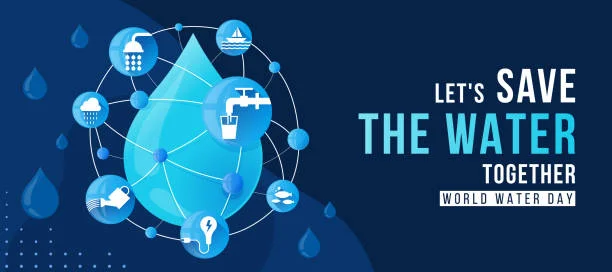If you’ve ever been part of planning a large outdoor event , from music festivals and marathons to local fairs or sports tournaments , you already know how much coordination it takes to keep everything running smoothly Planning Water Supply. But one factor that often doesn’t get the attention it deserves is water. Reliable access to clean drinking water can make or break an event’s success.
While catering, entertainment, and logistics get top billing, hydration is a non-negotiable element of safety and comfort. More organizers are discovering that setting up a water filler station is one of the smartest moves they can make , not just for guests’ well-being but also for sustainability and cost-control.
In this guide, we’ll walk through why water planning deserves a place at the top of every event checklist, and how to anticipate your needs, design better layouts, and keep both guests and vendors hydrated without relying on endless stacks of plastic bottles.
1. Why Water Planning Should Never Be an Afterthought
Every event planner knows that behind the lights, sound systems, and crowds, there’s an intricate web of logistics that needs to run perfectly Planning Water Supply. And water , though invisible in most plans , touches nearly every part of the experience.
Hydration Is a Safety Issue
In hot weather, dehydration can escalate quickly. Outdoor concerts, summer fairs, and sports competitions often involve hours of activity under direct sun. When attendees can’t easily find drinking water, the risk of heat exhaustion and other health emergencies spikes.
Even in cooler temperatures, dehydration affects focus, mood, and energy , leading to irritability, headaches, and fatigue among both guests and staff. Having easily accessible water stations is one of the simplest ways to reduce medical incidents and improve attendee satisfaction.
Water Supports More Than Attendees
Water planning doesn’t stop at drinking stations. Vendors need it for cooking and cleaning, medical staff require it for first aid, and sanitation teams rely on it for maintenance. Without proper supply points, everyone from food truck operators to cleanup crews struggles to perform efficiently.
When water infrastructure is overlooked, it leads to delays, overcrowded vendor areas, or worse , sudden shortages that reflect poorly on organizers Planning Water Supply.
Keep exploring related thoughts that turn curiosity into clear understanding.
Sustainability Is Part of the Modern Event Experience
Plastic bottles used to be the default solution, but public perception has changed. Attendees increasingly expect environmentally conscious planning. Installing refill points encourages guests to bring reusable bottles, significantly cutting down waste while demonstrating the event’s commitment to sustainability.
What’s more, it often costs less in the long run than repeatedly purchasing single-use containers or paying for waste disposal afterward.
2. Estimating How Much Water You’ll Need
Before choosing equipment or designing layouts, organizers need to estimate consumption accurately. Misjudging demand , either too low or too high , can lead to logistical headaches and wasted resources.
General Guidelines for Water Demand
While every event is unique, here are some general benchmarks for planning:
- Outdoor public events: Plan for 1–2 liters per person per day of drinking water.
- Athletic or endurance events: Increase to 3–5 liters per person, depending on temperature and exertion level.
- Food and beverage vendors: Estimate an additional 20–25 liters per vendor per day for preparation and cleaning.
- Staff and volunteers: Don’t forget your crew , allocate at least 1 liter per person per hour for those in active roles, especially outdoors.
These estimates give you a baseline, but actual needs depend on factors like weather, event duration, crowd density, and available shade Planning Water Supply.
Weather and Location Matter
Hot, humid, or high-altitude environments will dramatically increase water consumption. Even small shifts in temperature can affect hydration needs. For instance, marathon runners in 30°C (86°F) weather consume nearly double the fluids compared to cooler conditions.
Check historical weather data for the event location and have contingency plans for unexpected heatwaves or dry spells.
Consider Accessibility and Flow
Even if total supply is sufficient, poor placement can create bottlenecks. The key is even distribution , ensuring no attendee is more than a few minutes away from clean drinking water. If crowds must cross long distances or wait in lines, consumption drops while frustration rises.
Mapping your water plan alongside crowd-flow diagrams ensures stations are located near activity zones, food areas, and restrooms , where people naturally slow down and seek refreshment.
3. Designing the Right Water Layout for Your Event
Once you’ve estimated needs, the next step is design. Water distribution isn’t just about volume , it’s about convenience, accessibility, and perception for Planning Water Supply.
Map the Movement of People
Think like your guests. Where will they spend most of their time? Where are they likely to get thirsty?
Placing refill stations near rest areas, entrances, or shaded spaces encourages consistent use. Avoid situating them too close to food lines or high-traffic intersections, which can create crowding.
If your event spans multiple zones (like a festival or marathon route), ensure at least one water access point every 100–200 meters depending on crowd density.
Accessibility for All
Water access should be inclusive. Stations must be reachable for people with disabilities, and spouts should accommodate various bottle sizes. Adding clear signage , both physical and digital , helps attendees locate refill points quickly.
If your event includes families, remember that children often need shorter dispensers or staff assistance.
Keep the Experience Clean and Hygienic
Nothing ruins trust faster than an unkempt water station. Regular sanitation checks, shade coverings, and trash receptacles near refill areas keep the experience pleasant and reduce litter.
Schedule cleaning teams to inspect refill points hourly during peak use. Touch-free spigots and proper drainage reduce contamination risks and maintain hygiene.
4. Partnering for Efficiency: Equipment, Logistics & Staffing
Even with the best plan on paper, execution requires reliable infrastructure and trained personnel.
Choose Dependable Water Systems
When selecting equipment, consider flow rate, pressure, and safety standards. A high-capacity refill unit can serve hundreds of people per hour, while smaller units suit more intimate gatherings.
Self-contained mobile hydration systems , often designed for temporary setups , allow rapid installation and teardown. They’re ideal for large outdoor venues or areas without existing plumbing.
If your event lasts multiple days, ensure filtration systems are inspected daily, and backup tanks or connections are available in case of surges.
Train Staff and Volunteers
Event staff should know where all refill points are, how to monitor supply, and what to do if a system malfunctions. Quick responses prevent downtime that could otherwise lead to dehydration issues or negative feedback.
Establish simple communication channels (like radio or messaging apps) between hydration teams, logistics coordinators, and emergency services. This ensures rapid coordination if repairs or refills are needed.
Integrate Water Planning into Overall Logistics
Water distribution shouldn’t exist in isolation. Incorporate it into your master plan , alongside food service, medical stations, and waste management.
Shared logistics save time and resources. For example, water tanks for refill points can sometimes double as supply sources for food vendors or sanitation crews, as long as they’re properly maintained and separated by use.
5. Sustainability, Branding, and Guest Experience
Today’s eventgoers care about more than entertainment , they care about environmental impact and comfort. Water stations can contribute to both if designed thoughtfully.
Reducing Plastic Waste
Single-use plastic bottles have long been an environmental headache. At large festivals, hundreds of thousands of bottles can pile up after just one weekend. By installing refill stations and encouraging reusable bottles, organizers can drastically cut waste and disposal costs.
Events that promote sustainability often see positive press coverage and stronger community support. Attendees notice when organizers take visible steps toward greener operations , and water is an easy, tangible place to start.
Branding the Experience
Refill stations also offer subtle branding opportunities without being intrusive. Event logos, partner sponsorships, or sustainability messages can be added to signage or refill station wraps. Instead of traditional advertisements, they become part of the event’s infrastructure , functional, yet memorable.
For example:
“Stay hydrated with our eco-friendly water stations , refill, refresh, and keep the festival green.”
This kind of messaging reinforces values while enhancing the guest experience.
Measuring Impact After the Event
Post-event reporting is a critical but often overlooked step. Collect feedback from attendees and vendors about water accessibility, and review metrics such as total volume dispensed or bottles saved.
These statistics can support sustainability goals, attract sponsors, and improve planning for future events. Demonstrating measurable results , like “We reduced plastic bottle waste by 80% this year” , builds credibility and strengthens public trust for Planning Water Supply.
Planning for the Unexpected
Even the best-laid plans can encounter surprises , and water planning is no exception. Weather shifts, equipment issues, or unexpected attendance spikes can strain supply systems.
Build Flexibility into the System
- Backup tanks or portable refill units can provide emergency capacity.
- Extra hoses and connectors prevent delays during quick adjustments.
- A mobile maintenance team ensures that leaks or clogs are handled swiftly.
Maintaining communication between water teams and event command centers helps spot problems early , before they affect guests.
Consider Health and Compliance Regulations
Depending on location and scale, local authorities may require water quality testing, sanitation protocols, or inspection permits. Compliance is not only a legal obligation but also a reputational safeguard.
Work with certified technicians to test filtration systems and ensure all refill points meet safety standards. Posting clear signage , “Filtered potable water” , assures attendees of quality and builds trust.
Final Thoughts: Water as a Cornerstone of Good Planning
When most people think about event logistics, they picture stages, tents, and lighting , not pipes and tanks. But reliable water access underpins everything else. It keeps guests healthy, vendors functional, and the event environmentally responsible.
For modern organizers, hydration planning isn’t an optional add-on; it’s a marker of professionalism. Thoughtful preparation , from estimating demand to maintaining clean refill systems , ensures a safe, enjoyable experience for everyone involved.
As audiences become more conscious of health and sustainability, water accessibility is becoming a competitive advantage. Events that plan ahead not only prevent emergencies but also demonstrate care for their communities and the planet.
Because at the end of the day, every great event has one thing in common: guests who leave refreshed, satisfied, and ready to return , not parched and searching for a bottle.
And that all begins with something as simple, and as essential, as water.
Unlock more paths of discovery — explore more content crafted for curious minds.






